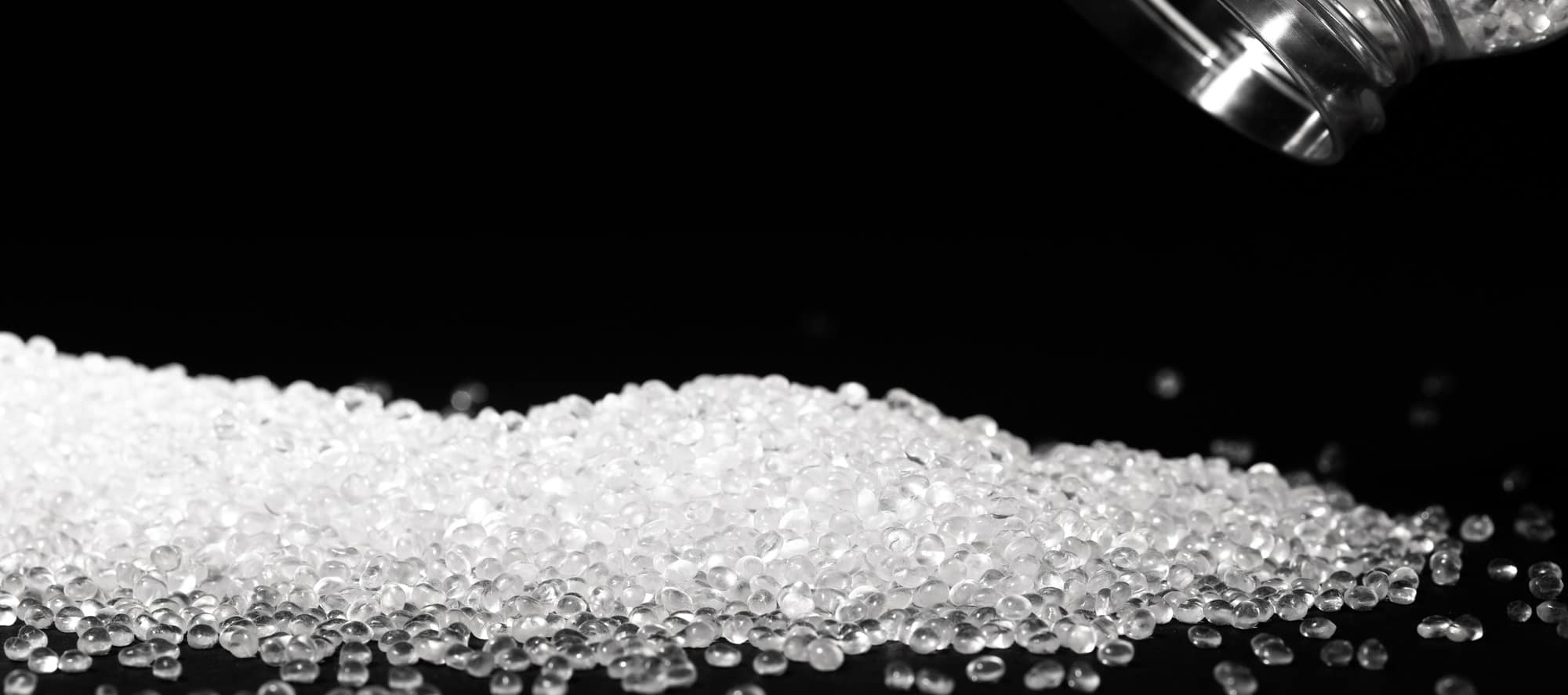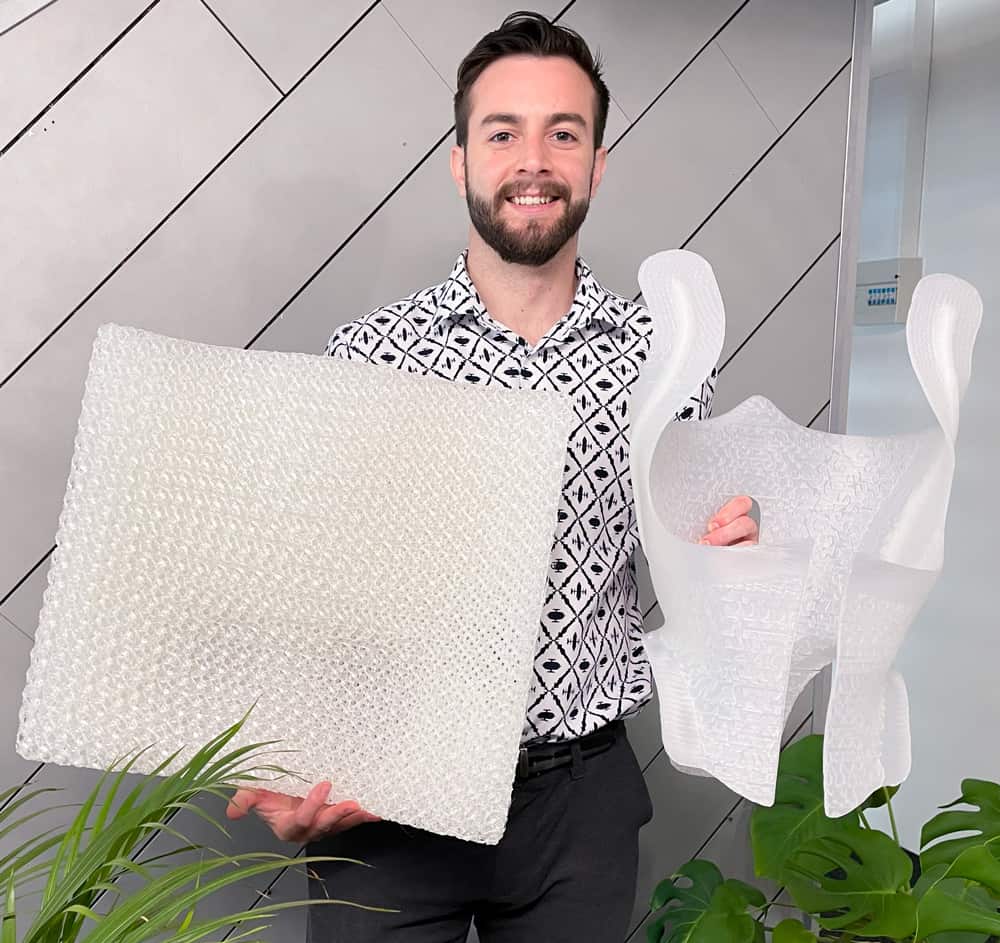12 reasons to master 3D printing with polypropylene - it is a game changer
Orthopedic applications require precise, customized solutions to ensure optimal patient care and outcomes. In recent years, 3D printing has emerged as a groundbreaking technology, reshaping the field of orthopedics. Among the various materials used in 3D printing, polypropylene (PP) has gained significant attention for its unique properties, making it an ideal choice for orthopedic applications that require durability and flexibility. In this blog post, we will explore the incredible potential of polypropylene in 3D printing and how it is revolutionizing orthopedic care.
Polypropylene is a material of choice for orthopedics
Polypropylene possesses remarkable characteristics that align perfectly with the demands of orthopedic applications. In this article, we will take a closer look at what makes it a preferred material in the traditional crafting of orthopedic applications and how this is transferred to 3D printing.
With the proper set-up and specialized printers, orthopedics professionals will only see the advantages of 3D printing in polypropylene outgrow traditional crafting. Traditional manufacturing methods often need to catch up regarding the complex requirements of orthopedic patients. By utilizing 3D printing technology, orthopedic professionals can create patient-specific solutions tailored to individual anatomies and needs. This level of customization enhances treatment outcomes and patient satisfaction. Moreover, 3D printing offers faster production times, reduced costs, and greater design flexibility, empowering orthopedic professionals to push the boundaries of innovation and care.
First, let’s take a closer look at the properties of the PP material and why it is a perfect fit for mass-customized orthopedic applications:
Strength, flexibility, and durability
The first three reasons showcase some of the essential characteristics:
1: Light and strong: If you need to wear an orthopedic application on your body, you will love polypropylene for Its low density, which results in a lightweight yet durable solution. You ensure patient comfort while maintaining necessary strength and support.
2: Durable: Polypropylene has excellent impact resistance, making it suitable for orthopedic devices requiring long-lasting durability.
3: Flexibility: In polypropylene (PP), flexibility is one of its notable characteristics. PP exhibits good flexibility, allowing it to withstand repeated bending or flexing without cracking or breaking.
Surface finish
The surface characteristic of the application made from polypropylene (PP) in orthopedics is an important consideration that can impact patient comfort and functionality. PP has a surface finish, which can offer several benefits in orthopedic applications:
4: Comfort: The smooth surface of PP minimizes friction and irritation against the skin, which is particularly beneficial in orthopedic devices such as braces, splints, or prosthetics, where the material comes into direct contact with the patient’s body. The smooth surface reduces the risk of chafing or rubbing, enhancing patient comfort during extended periods of use.
5: Hygiene: Polypropylene’s surface is relatively easy to clean and maintain. The absence of surface irregularities or rough textures reduces the likelihood of bacteria or other microorganisms accumulating on the material’s surface. It makes it suitable for orthopedic applications where hygiene and cleanliness are crucial, such as surgical guides or assistive devices.
6: Skin-Friendly: The surface of PP minimizes the risk of abrasion or pressure points against the skin. It is vital in orthopedic applications where the material is in direct contact with sensitive or vulnerable body areas. By reducing friction and pressure, PP helps prevent skin irritation, ulcers, or other complications from prolonged use of orthopedic devices.
Imagine what you can accomplish
- Try before you buy: use the orthotics & prosthetics print service
- Test our capabilities: order a free sample
Moisture safe and chemical resistance
The non-moisture sensitivity, chemical resistance, and dishwasher-proof polypropylene (PP) in orthopedic applications offer several advantageous features:
7: The chemical resistance: Polypropylene characteristics enable its compatibility with various sterilization methods, ensuring the highest hygiene standards in orthopedic practices.
8:Non-moisture sensitive: This property ensures that orthopedic devices made from PP retain their structural integrity and mechanical properties even when exposed to moisture or humid environments.
9: Dishwasher safe: It simplifies the cleaning process, helps maintain cleanliness, and ensures the longevity of orthopedic devices. However, it’s crucial to consider device-specific recommendations and consult with professionals for the best cleaning practices.
Sustainable and recyclable
3D printing have all the advantages compared to traditional manufacturing method when it comes to sustainability and proper use of resources.
10: Sustainability: Polypropylene is a recyclable thermoplastic, meaning printed parts made from PP can be recycled. It helps reduce waste by minimizing the environmental impact of discarded materials.
11: Energy efficiency: 3D printing with polypropylene can be more energy-efficient than traditional manufacturing methods. Additive manufacturing allows for precise material placement, minimizing waste and reducing the overall energy consumption associated with production.
12: Reduced transportation emissions: 3D printing enables localized manufacturing, reducing the need for extensive transportation of goods. It can help lower carbon emissions associated with long-distance shipping and contribute to a more sustainable supply chain.
Changing the game with 3D-printing
The compatibility of polypropylene with 3D printing techniques opens up a world of possibilities in orthopedic applications. With Fused deposition modeling (FDM, also known as FFF (fused filament fabrication)) or selective laser sintering (SLS), intricate orthopedic devices and implants can be produced with precision and efficiency.
Custom braces, splints, prosthetics, and surgical guides are just a few examples of the wide range of orthopedic solutions that can be 3D printed using polypropylene. This level of customization ensures a better fit, improved functionality, and enhanced patient comfort.
Also, the patient-centric benefits of polypropylene 3D-printed orthopedic devices are substantial. Lightweight polypropylene solutions reduce the burden on patients, allowing for increased mobility and comfort. The customizability of polypropylene ensures a perfect fit, minimizing discomfort and improving treatment outcomes. Whether it’s a personalized orthopedic brace or a prosthetic limb, polypropylene 3D printing offers tailored solutions that meet each patient’s unique needs, fostering better rehabilitation and quality of life.
How to master 3D printing in PP
Even though the advantages speak for themselves, it is not an accessible manufacturing technology to master. While polypropylene brings numerous benefits, there are challenges to address. Ensuring strong interlayer adhesion and optimizing surface finish are areas of ongoing research and development in designing the replicator solution that can deliver a continuous, high-quality product.
Controlling the print process and the components is the key to successful fabrication in PP. Not all 3D printers on the market can use filament with a melting point of around 130-171°C (266-340°F), and orthopedic users need a simple workflow to make 3D printing a competitive alternative to traditional crafting.
In the Embrace Corset solution, Create it REAL combines 3D printing software, application-specific 3D printer, and high-quality printing material in a solution that allows non-3D printing experts to get started. The solution targets the modern orthopedic workshop ready to leave subtractive manufacturing behind and enter the cleaner and zero-waste world of the additive manufacturing process.
A game changer?

Polypropylene has emerged as a game-changing material in 3D printing for orthopedic applications. Its exceptional properties, combined with the customization capabilities of 3D printing technology, are revolutionizing patient care. Contact sales@createitreal to explore the possibilities of polypropylene 3D printing for orthopedics applications. Together, let's revolutionize orthopedics mass-customization, decentralize the production and improve patients' lives worldwide.




